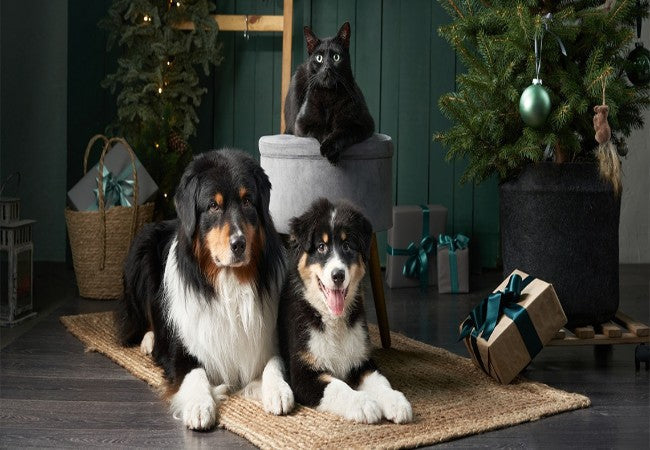In this article
Vet 2025 Guide: Why Is My Cat Noisy When Breathing? Causes, Care & Vet Action 🐱🌬️
By Dr Duncan Houston, BVSc — Professional Veterinarian 🩺 I'm here to guide you through feline noisy breathing—understanding sounds, risks, and evidence-based care.
🔍 What Counts as Noisy Breathing?
Noisy breathing—like wheezing, snoring, raspy inhaling, open‑mouth breathing, or panting—is uncommon in cats. Normal feline respiration is quiet and smooth (20–30 breaths/min at rest) :contentReference[oaicite:2]{index=2}. Disruption usually signals an issue.
📣 Key Breathing Sounds & What They Mean
Stertor (Low‑Pitch Sound):
Snoring‑type noise from nasal/throat obstruction. Occasional soft snoring is less worrying, but persistent stertor while awake is a red flag :contentReference[oaicite:3]{index=3}.
Stridor (High‑Pitch Whistle):
High-pitched noise when airflow is blocked in larynx/trachea. Can indicate collapse, tumor, or foreign object :contentReference[oaicite:4]{index=4}.
Panting or Open‑Mouth Breathing:
Rare in cats: often from stress, exertion, heatstroke, or serious disease like heartworm or asthma :contentReference[oaicite:5]{index=5}.
🩺 What Could Be Behind Noisy Breathing?
1. Upper Respiratory Infections
Viral or bacterial infections cause congestion, stertor, sneezing, discharge—often treatable but may need antibiotics :contentReference[oaicite:6]{index=6}.
2. Feline Asthma
Chronic small‑airway inflammation causes wheezing, coughing, rapid breathing, and audible noise—diagnosis via radiographs or bronchial wash; controlled with inhalers and steroids :contentReference[oaicite:7]{index=7}.
3. Nasal/Pharyngeal Polyps & Tumors
Benign polyps cause nasal blockage and stertor. Tumors (e.g. squamous cell carcinoma) are more serious and may need biopsy and surgery :contentReference[oaicite:8]{index=8}.
4. Brachycephalic Syndrome
Cats like Persians with short faces may have elongated soft palates and narrow nostrils, causing stertor, snoring, and exercise intolerance :contentReference[oaicite:9]{index=9}.
5. Asthma‑Related Obstruction & Pneumonia
Fluid or inflammation in lungs may cause gurgling, labored breathing, and wheezing. Severe cases need oxygen, antibiotics, or steroids :contentReference[oaicite:10]{index=10}.
6. Heart Disease / CHF
Fluid accumulation around lungs causes rapid breathing, panting, sometimes blue gums—diagnosis via X‑ray/ECHO; treat with diuretics and cardiac meds :contentReference[oaicite:11]{index=11}.
7. Foreign Body / Trauma
Stuck object in airway causes stridor; chest trauma may cause pneumothorax or fluid build-up—urgent treatment needed :contentReference[oaicite:12]{index=12}.
8. Hyperthyroidism
An overactive thyroid increases metabolism and breathing rate; often older cats showing weight loss and appetite increase :contentReference[oaicite:13]{index=13}.
9. Heatstroke or Panic
Overheating or fear can cause panting and noisy breathing—watch for open‑mouth breathing, drooling, lethargy :contentReference[oaicite:14]{index=14}.
🛑 Recognizing Emergency Signs
If you see any of the following, seek **immediate vet care**:
- Open‑mouth breathing at rest or panting.
- Rapid shallow breaths >30/min.
- Blue/pale gums, collapse, weakness.
- Neck extended, chest heaving, anxious posture (“rescued-paw stance”).
- Loud wheezing, gasping, or gagging.
Labored breathing is always an emergency—don’t wait :contentReference[oaicite:15]{index=15}.
📋 Veterinary Diagnosis Process
- Full physical exam and auscultation (heart & lungs).
- Measure resting respiratory rate & observe breathing posture.
- Blood work & urinalysis to check for infections, organ issues.
- Chest/nasal X‑rays or ultrasound for fluid, tumors.
- Rhinoscopy/bronchoscopy or CT to find polyps/foreign objects/tumors.
- Endocrine testing if hyperthyroidism suspected.
🩺 Treatment Approaches
• Emergency Care
Provide oxygen, stabilize blood pressure, drain chest fluid, relieve obstructions :contentReference[oaicite:16]{index=16}.
• Infections (URI/Pneumonia)
Use antibiotics, antivirals, nebulization, hydration, and rest :contentReference[oaicite:17]{index=17}.
• Asthma
Administer inhaled steroids, bronchodilators using feline-specific chambers (AeroKat) :contentReference[oaicite:18]{index=18}.
• Surgical Solutions (Polyps/Tumors/Foreign Bodies)
Tissue removal via endoscopy or surgery; follow-up chemo or radiation for malignancies :contentReference[oaicite:19]{index=19}.
• Brachycephalic Syndrome Relief
Maintain ideal weight, avoid heat/extreme exercise; consider soft palate resection or rhinoplasty if severe :contentReference[oaicite:20]{index=20}.
• Heart Disease
Use diuretics, ACE inhibitors, and beta-blockers; manage fluid and rest :contentReference[oaicite:21]{index=21}.
• Heatstroke Management
Cool gradually, provide fluids, monitor vitals closely :contentReference[oaicite:22]{index=22}.
• Hyperthyroidism Treatment
Use anti-thyroid meds, radioiodine therapy, or surgery to normalize metabolism :contentReference[oaicite:23]{index=23}.
🏡 At‑Home Monitoring & Care
- Track respiratory rate and breathing quality at rest.
- Use humidifiers and reduce allergens at home.
- Avoid heat exposure and limit exercise for brachycephalic cats.
- Maintain a healthy weight to support lung and heart health.
- Give prescribed inhalers, antibiotics, or diuretics exactly as directed.
- Provide a stress-free, quiet environment during recovery.
📚 Case Study: Milo the Asthmatic Tabby
Presentation: 5-year-old Tabby with nightly wheezing and open-mouth breathing.
Diagnosis: Chest X‑rays and BAL confirmed asthma.
Treatment: Inhaled fluticasone with chamber; spacer training; hypoallergenic bedding.
Outcome: Within weeks, breathing quieted, cough stopped, improved sleep and playfulness.
✅ Take‑Home Reminders
- Noisy breathing always warrants veterinary evaluation.
- Distinguish between occasional snore and active distress.
- Emergency signs include panting, blue gums, collapse.
- Chronic cases often respond well to targeted therapy.
- Preventive health measures are vital: vaccines, wellness checks, weight control, non-smoking homes.
🌟 Why Vet‑Guided Support Matters in 2025
At Ask A Vet, Woopf, and Purrz, we integrate professional veterinary insight with smart tools—like remote triage via the Ask A Vet app, Woopf air purifiers to reduce allergens, and Purrz respiratory support diets. This holistic approach improves diagnosis, treatment, and quality of life for cats with breathing issues.
📝 Bottom Line
Normal cat breathing is quiet and effortless. Noisy, labored, or panting breaths—especially at rest—signal possible respiratory, cardiac, or systemic disease. With attentive monitoring, prompt vet evaluation, and guided care, most causes can be effectively managed—and your cat can breathe easily again. 💖






